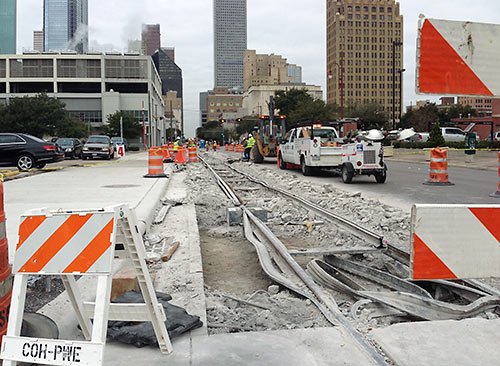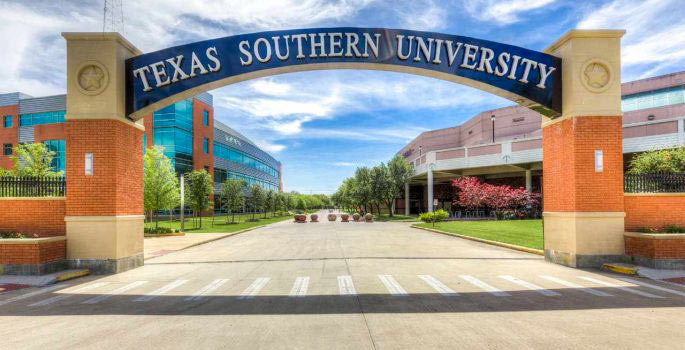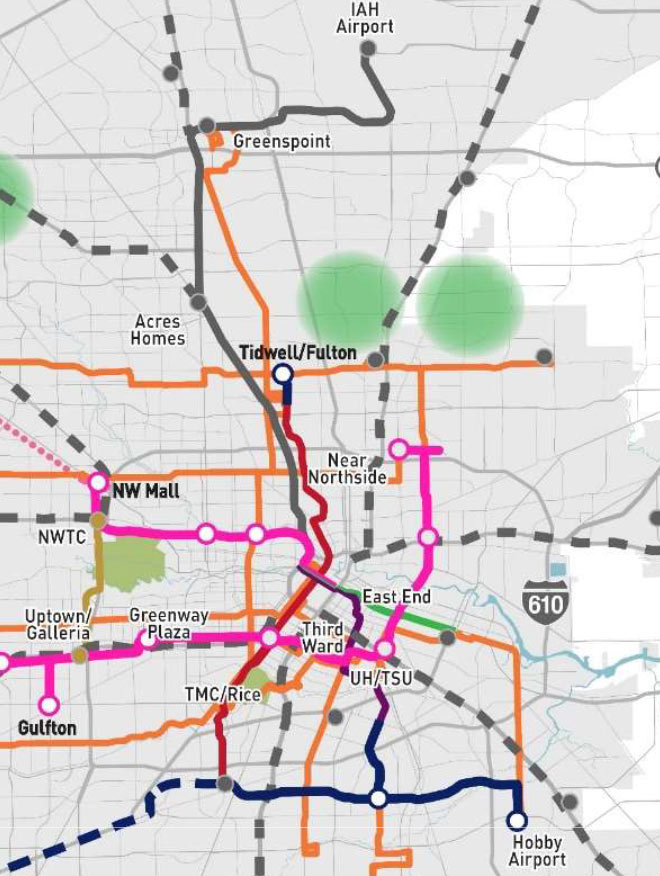
As noted in this morning’s Headlines post, yesterday Metro toted around some trains for “clearance testing” on the eastern stretches of the East End and Southeast rail lines scheduled to open later this year, in advance of electricity being brought down the lines. But downtown, repair continues on a 200-ft. stretch of track shared by the 2 lines on Capitol St. between LaBranch and Crawford — where the rails “probably shifted during concrete placement” and therefore didn’t set properly, a spokesperson for the transit agency tells Swamplot. The concrete has been torn up so the stretch can be rebuilt, level. The rework is being paid for at no cost to Metro by the contractor, Houston Rapid Transit, and will not cause any delay in opening the lines, the spokesperson says.
- East End Line and Southeast Line coverage [Swamplot]
Photo: Swamplot inbox





WOw…Metro just needs to disband
Can anyone in the know speak to the challenges of building rail lines on Houston’s soft/moving/swampy soil? The roads don’t seem to handle it too well…
@Rodrigo The soil issue is related to what are called “swelling clays” (Bentite, smectite etc) which expands to many times its original size when wet and shrinks the same amount when dry. Drought vs normal cycles raise and lower the roads until they crack, and the uneven distribution of these clays causes differential compaction in different areas. (Areas near bayou’s previous paths have higher concentrations). I presume the issue for rail is similar to those that roads face, and that they have to build in a certain tolerance to the rail
I’m no fan of metro, and I especially think light rail isn’t the solution to Houston’s transit issues, but I wouldn’t think this is per se is metro’s fault. The fact that the contractor is replacing it (at obviously no small cost if they have to demo the whole stretch) means it was probably an incorrect installation. I doubt it is due to the underlying soil because that usually would not present itself in this short time. I’m sure there is a civil eng who frequents this site who could give us more info.
Rodrigo – I can’t speak to rails, but the issues with the roads and soil is all about economics, not engineering. They could build better roads to deal with the soil but it would cost alot more money. So, they figure that they would spend just enough to get a half-way decent road., and spend money later to fix it. On a Net Present Value basis it is usually better to spend money further out into the future, than it is to spend it all up front.
The result is crappy roads in between the time that they deteriorate and get fixed.
@jauncarlos Thanks!
Concrete placement moving embeds happens. –If thats the contractors excuse, then it’s believable. In my opinion, its more believable than soil settlement at this time interval. That being said; tolerances on rail lines can be pretty tight (no knowledge on light rail however) and the contractors should have done a better job securing the embeds before concrete placement. The specific weight of concrete is around 150 lb/Ft^2— it can easily move and push steel around during placement
Ft^3 (Cubic foot) Correction to the units above (apologies.)
@Rodrigo: This problem doesn’t appear to be swelling/shrinking soils – those types of problems begin when the seasons change and we get wet/dry cycles. Generally it takes 2+ years to see damage from swelling soils. As a civil engineer, I’d be this has to do with either mis-placed stakes causing portions of the concrete to be poured too high, or the embeds used to weld the rails into the concrete moved laterally during pouring. Both of these happen VERY often (~10% of the time in the rail jobs I’ve worked on) because rail has MUCH tighter tolerances than the highways the concrete workers are used to building. Even bridges on a highway can get away with an inch or more of movement, whereas with rail you only get 1/8 to 1/2 an inch.
@Bubba: You’ve hit the nail on the head. The usual expansive clay cause in Hou is generally koalinite, which sucks up any available moisture and expands about 1 ft^3 in total volume for every 0.75 ft^3 of water it absorbs. This type of stuff is expensive to fix – you generally want to replace about 10% of the volume of the clay with pure lime, which will keep the moisture hidden away. The catch: Only the top few feet of soils experience this shrinking/swelling cycle. For more expensive facilities (which warrant more protection) they lime treat deeper and deeper into the soil to be more certain that moisture never reaches the koalinite. For the Katy Freeway, we treated to 12 feet of depth, but for house slabs it’s usually only 3 feet.